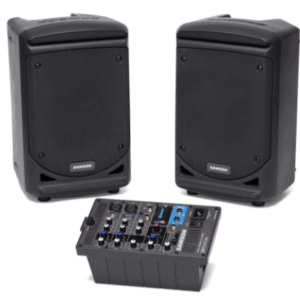In an age of endless competition and short attention spans, your brand promise is the thread that ties everything together. It tells your audience what to expect every time they interact with your business. A strong brand promise isn’t just a catchy phrase—it’s a commitment that shapes perceptions, builds trust, and guides every action your company takes. Developing one that truly resonates requires clarity, authenticity, and consistency. Let’s explore how to craft a brand promise that connects emotionally and delivers lasting impact.
Understanding the Core of a Brand Promise
A brand promise is a clear statement of value that your customers can expect from your business. It goes beyond slogans or taglines—it’s about what you consistently deliver through your products, services, and customer experience. For example, FedEx’s promise “When it absolutely, positively has to be there overnight” emphasizes reliability, while Apple’s focus on “innovation” and “simplicity” defines the experience their customers expect.
A brand promise should align with your mission, values, and vision. It sets a standard for how your company behaves and how it wishes to be perceived. When done right, it acts as an internal compass for decision-making and an external message that resonates deeply with your target audience.
Step 1: Understand Your Audience
The first step in developing a meaningful brand promise is understanding your audience. Who are your customers? What are their values, needs, and pain points? The more you know about them, the better you can align your brand promise with what they care about most.
Start by analyzing customer feedback, conducting surveys, and exploring social media conversations about your brand and competitors. Identify recurring themes that reveal what your audience values most—whether it’s speed, quality, innovation, or customer care.
For instance, if your target market values sustainability, your brand promise might emphasize ethical practices and eco-friendly solutions. A promise built on deep audience insight ensures that your message feels authentic and relevant, not forced or generic.
Step 2: Define Your Unique Value Proposition
Your brand promise should clearly express what sets your company apart. This is where your unique value proposition (UVP) plays a crucial role. Your UVP defines why customers should choose you over competitors—what distinct benefit or experience do you deliver that others don’t?
Start by identifying your company’s core strengths and the emotional benefits your brand provides. For example, a skincare brand may promise “confidence through natural beauty,” blending emotional connection with tangible results. The most powerful brand promises combine rational benefits (what customers get) with emotional benefits (how it makes them feel).
To stand out, avoid vague statements like “the best quality” or “great service.” Instead, be specific and believable. If you can’t deliver on your promise every time, it’s better to refine it until you can.
Step 3: Keep It Simple and Memorable
A great brand promise is short, clear, and easy to remember. Think of Nike’s “Just Do It.” It captures empowerment, performance, and inspiration in three simple words. The simplicity helps it resonate universally.
Avoid jargon or overly complex phrasing. Your brand promise should be something that both employees and customers can easily recall and understand. It’s not about being clever—it’s about being clear.
You can test your draft by asking a few questions:
-
Does it align with your brand’s purpose and values?
-
Can your team articulate it effortlessly?
-
Does it emotionally connect with your audience?
If the answer to all is yes, you’re on the right track.
Step 4: Ensure Internal Alignment
Your brand promise isn’t just an external statement—it must be embraced internally. Every employee, from top management to customer service representatives, should understand and embody it. Internal buy-in ensures that your brand promise is lived, not just stated.
Consider conducting workshops or brand alignment sessions to ensure your team connects with the brand promise. When employees understand how their actions contribute to fulfilling the promise, they become ambassadors of your brand’s values.
For example, if your brand promise is about exceptional service, your team should have the tools, training, and freedom to deliver that experience consistently. Internal alignment turns a promise into a practice, reinforcing authenticity and trustworthiness.
Step 5: Integrate It Across All Touchpoints
Your brand promise should be reflected in every touchpoint of your customer journey—from marketing campaigns and website design to product packaging and after-sales service. Consistency is key to credibility.
Each interaction should reinforce your promise subtly but effectively. If your brand promise centers around convenience, your website should be easy to navigate, and your customer support should respond promptly. If it’s about innovation, your content and design should reflect forward-thinking creativity.
Many businesses use professional help from Company Branding Services in Dubai to ensure their brand promise is visually and strategically integrated into all brand assets. This approach creates a seamless experience that strengthens recognition and trust.
Step 6: Make It Authentic and Achievable
A brand promise must be authentic—it should reflect who you truly are as a company. Overpromising or making exaggerated claims can lead to disappointment and damage your reputation. Instead, focus on a promise you can consistently deliver and even exceed over time.
Authenticity also means your brand promise should evolve with your company. As markets and customer expectations change, revisit your promise to ensure it remains relevant. Brands like Starbucks and Amazon continuously refine their promises while staying true to their core values—community and customer-centricity.
Step 7: Measure and Refine Over Time
Once your brand promise is in place, measure how well it’s resonating and being fulfilled. Use customer satisfaction surveys, brand perception studies, and social listening tools to track how people perceive your brand.
If customers’ experiences consistently match your promise, you’re building strong brand equity. If not, identify gaps and take corrective action. Continuous improvement ensures your brand promise stays aligned with customer expectations and market realities.
Examples of Successful Brand Promises
Looking at established brands can provide inspiration for developing your own promise.
-
Coca-Cola: “To inspire moments of optimism and happiness.” It’s not about the beverage—it’s about emotion and connection.
-
Amazon: “To be Earth’s most customer-centric company.” Every innovation and service revolves around this goal.
-
BMW: “The ultimate driving machine.” It reflects performance, precision, and passion for driving.
These promises work because they are believable, emotionally engaging, and consistently delivered.
Why a Strong Brand Promise Matters
A clear and resonant brand promise can transform your business in multiple ways. It builds trust, enhances loyalty, and differentiates your brand in crowded markets. Customers are more likely to stay with brands that deliver consistently on their promises.
Moreover, it simplifies decision-making for both customers and employees. When everyone understands what the brand stands for, actions become more aligned, and experiences become more consistent. Businesses that use professional Company Branding Services in Dubai often find that a well-crafted brand promise not only elevates perception but also strengthens internal culture.
Final Thoughts
Developing a brand promise that resonates isn’t a one-time task—it’s an ongoing commitment. It starts with understanding your audience, defining your unique value, and crafting a clear, authentic statement of what you stand for. Then it must be integrated, lived, and refined through every aspect of your brand experience.
When you build a promise that aligns with both your company’s values and your customers’ desires, you create a brand that people trust, remember, and recommend. That’s the true power of a brand promise—it turns expectations into loyalty and connections into enduring relationships.




